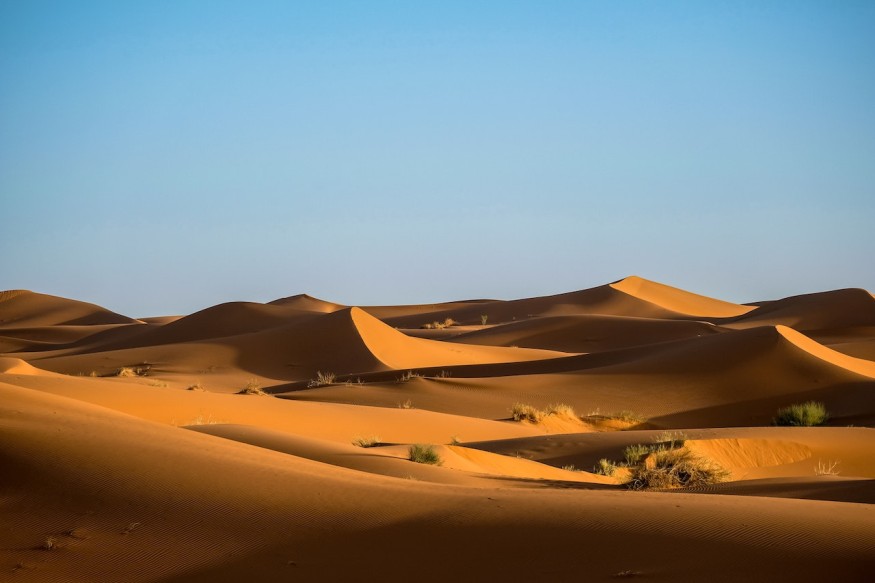
While hundreds of huge ancient structures were built along the northwest Arabian deserts, the reason and use of these structures have remained a mystery. Per Science Alert , based on a new in-depth analysis, archaeologists have discovered that these structures were used by the Neolithics for mysterious rituals.
Mustatil Monuments
Thousands of years before pyramids rose in prehistoric Egypt, individuals from the Arabian Peninsula came up with distinct and marvelous structures of their own. Inverse notes that these structures were called mustatils, which is very different from a pyramid. Mustatils were arranged in a 2D rectangle. Some of its distinct characteristics were that it had open courtyards and short walls.
These mustatils were extremely prevalent across the area. Inverse reports that there are around 1600 known mustatils in Saudi Arabia. However, their ancient purpose and function had remained a mystery.
Archaeologists were baffled by mustatils ever since the structures garnered attention during the 1970s. However, it was only in 2017 that their widespread prominence was documented in a paper regarding their discovery. Aerial examinations helped in identifying around 1,600 mustatils across the desert.
Mustatils were described as two thick, short lines of heaped stones that were quite parallel and were connected by two thinner and longer walls. Some were made from basalt in lava fields, while other mustatils consisted of desert pavements.
3/ Mustatil are complex monumental structures consisting of two thick ends (base and head) connected by 2 or more long walls to create a series of courtyards, that look like big rectangles (mustatil, in Arabic) from the air. Mustatils range in length from 20m to over 600m. pic.twitter.com/wKL1S11AB4
— PAKEP (@PAKEP_KSA) April 30, 2021
ALSO READ: Stonehenge An Ancient Calendar? Prehistoric Link Between Large Stones and Sun Worship Revealed
Rituals, Pilgrimages, Burials
Now, according to a recent study published in the PLOS One journal, researchers described how ritual stones, human burials, and animal bones show that the monumental area was used for pilgrimages and sacrifices. Other than that, mustatils may have also served various roles as centuries passed.
Aside from this, a 2021 paper revealed how Melissa Kennedy, an archaeologist from the University of Western Australia who is also part of the recent research team, helped in the excavation of one mustatils that is around 55 kilometers east of Al'Ula. Initial discoveries were reported in the 2021 paper, but more findings were yet to be discovered.
Horns and skulls of cattle, goats, sheep, and gazelles were spotted at the mustatil sites. They were buried around the stone. Considering how betyl was incorporated in various religious rituals and was thought to link humans with deities, Kennedy and the team thought of the animal remains as part of a ritual.
Kennedy also mentioned to Inverse that it was surprising how the remains were prepared as ritual offerings.
Presently, mustatils seem to be present in isolated areas. The ones located in Al'Ula were quite distant from existing settlements back then. This is partially why researchers thought that these mustatils could have been pilgrimage sites as well. Ancient individuals may have traveled to these sites as part of religious traditions and ceremonies.
Inverse also reports that the climate of the area back then was drastically different compared to the present-day climate. Around 7,000 years ago, the Arabian landscape saw more rain and humidity. Inverse notes that these structures may have been linked to water, considering how several of them are close to playa (flat areas that turn into lakes when it rains) and wadis (riverbeds that become full when rainy season hits). The researchers note the possibility that the people may have offered sacrifices to deities during times of drought.
Purposes of mustatil, however, seemed to shift over time. Human remains were also spotted for the first time during the excavations. Though animal remains demonstrate clear signs of sacrifice, the human remains do not lead to the same interpretations. Human burials also came later-around 400 years later-than animal remains.
Kennedy mentions that what is surprising is that the humans date later compared to the mustatils and that they demonstrate the return to or choice to use the structures for various purposes. It reveals that a structure's meaning and function could change over time.
They also hypothesize that the sites remained important even when individuals stopped using them. Later generations may have buried the deceased as a way to claim ownership of the monuments and essentially claim connections with the past.
RELATED ARTICLE : Fossilized Ancient Human Feces With Parasites Reveals the Diet of Stonehenge Builders
Check out more news and information on Archaeology in Science Times.
© 2025 ScienceTimes.com All rights reserved. Do not reproduce without permission. The window to the world of Science Times.









